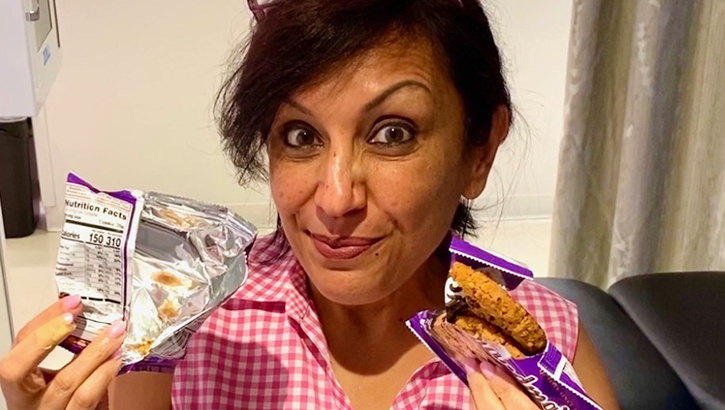Grateful for COVID-19 recovery, DHA employee becomes plasma donor
 Preet Bains enjoys snacks after donating two units of plasma. Bains is fully recovered from COVID-19 after being sick for about a month. (Courtesy photo)
Preet Bains enjoys snacks after donating two units of plasma. Bains is fully recovered from COVID-19 after being sick for about a month. (Courtesy photo)
The COVID-19 Convalescent Plasma (CCP) Collection Program is a Department of Defense effort to obtain 10,000 units CCP with emphasis on blood donations by members of the military community who have recovered from the disease. CCP will be given to critically ill patients, and to support the development of an effective treatment against the disease. Potential donors should visit the Armed Services Blood Program website to find a complete list of available collection centers.
One of the scariest health experiences of my life has turned out to be one of the most rewarding as well. I was sick for a month after coming down with COVID-19. But recovering from the virus enabled me to donate potentially lifesaving plasma.
My health scare began in early March. This was before the region where I live experienced shutdowns of public spaces because of the pandemic. My boyfriend was having a birthday, so a group of us decided to celebrate at an indoor ax-throwing venue. (Ax throwing is like darts, and a lot of fun!)
A few days later, I came down with a sore throat and low-grade fever. My boyfriend also felt unwell. So did three others who'd joined us at the birthday party. They all felt better after a few days, but I didn't. I saw my primary care provider and was tested for the flu and strep throat. Both tests came back negative. Then, around the seventh day of feeling bad, I woke up with shortness of breath. Turns out I had pneumonia, which can be a complication of COVID-19. I also was tested for the virus. Days later, the COVID-19 test came back positive.
My provider advised me to self-quarantine, stay hydrated, rest, take a fever reducer such as Tylenol, and to go to the hospital emergency department if my breathing got worse. Thankfully, that never happened.
My fever broke after about two weeks, and my breathing gradually improved. But I continued to experience weakness and muscle pain, along with occasional shortness of breath. I was worried I'd never be well enough to resume my active lifestyle – yoga, weight training, and cardio exercises.
Finally, after about four months, I felt like myself again. When I heard about the need for COVID-19 convalescent plasma*, or CCP, I didn't hesitate to sign up to donate. The donation itself took about an hour. That's a little longer than a standard blood donation, but it's still a comfortable and painless experience. I donated two units – one unit for plasma, and one unit for blood platelets.
I feel very fortunate that I recovered from COVID-19, and I'm happy that I was able to do something that might help others. I don't want anyone else to experience serious complications or even death from this terrible virus. Donating my plasma was an offering of deep gratitude to the universe. I consider it a wonderful blessing to have been able to potentially ease the suffering of others.
If you've been sick with COVID-19, I'm so sorry you experienced that. But I'm here to tell you, there's some good that can come out of it. Here's more information about donating convalescent plasma.
*Plasma is the yellow, liquid part of blood. COVID-19 convalescent plasma, or CCP, is plasma from patients who have recovered from the virus. CCP may contain antibodies that would help others fighting COVID-19 to recover. The Food and Drug Administration issued an emergency use authorization for convalescent plasma to be given to patients hospitalized with the virus, and it's also being studied for the treatment of COVID-19. The Department of Defense has a goal to collect 10,000 units by the end of September.